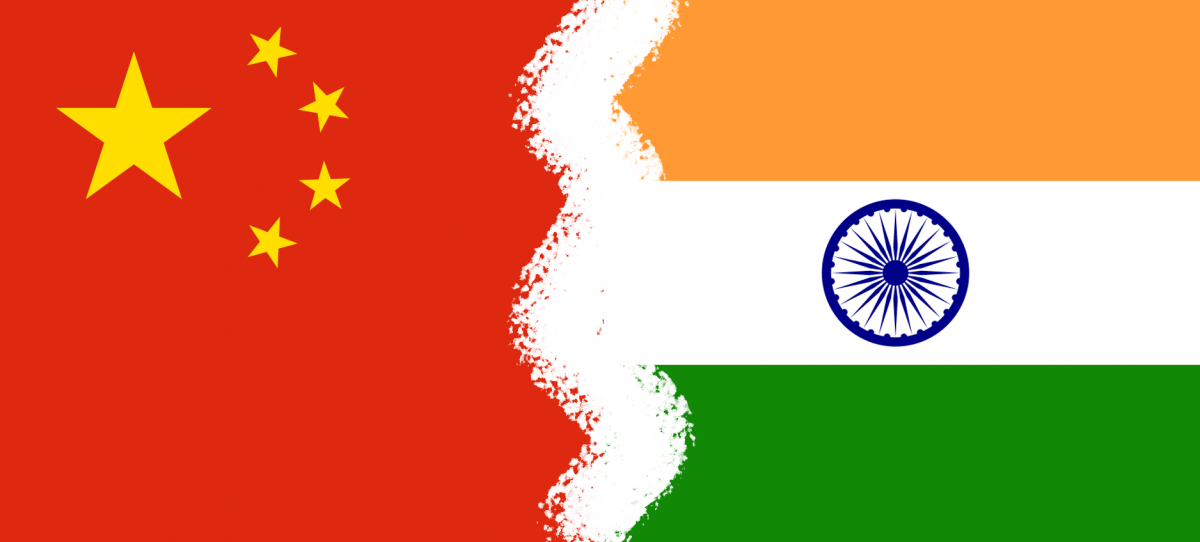The last decade has been awash with incidents of Chinese belligerence on India’s borders, in the North and North East. The long period of supposed peace and tranquility has actually worked to the strategic advantage of China as it enabled a widespread ramp up of its border infrastructure and connectivity, thus altering the border threat dynamics. India’s resolute actions on the borders has surprised China and consequently led to elevation of India in its threat calculus. In the unlikely possibility of any permanent resolution in the near future, efforts to maintain peace on the border creates strategic space for continued engagement between both nations, and gives a positive spin that ‘border talks’ are a constructive step forward. The recently concluded nineteenth round of talks with its narratives of ‘expeditious resolution’ and ‘continuation of the momentum of dialogue and negotiations through military and diplomatic channels’,[1] has yet again provided a whistle-stop for attempted de-escalation of forces, but with no final goalpost in sight. The past decades of downplaying of the border issue, and leaving it to be managed at the tactical level between the two Armies by way of keeping communications open and border management protocols, has had strategic consequences. The challenge is that while the relative peace has allowed India the space for stepping up military and infrastructure development on the borders, it equally allowed China to expand and strengthen their communications, connectivity, permanent infrastructure, and widen the military capability differential to its advantage.
Beijing has been consistent in its non-normative behaviour and pursued its salami slicing strategy, to exploit the interludes between long drawn out negotiations. The relatively more recent development of border defence villages under supervision of the People’s Liberation Army,[2] is clearly a fresh strategy of creating ‘new normals’ by building military controlled civilian villages and military infrastructure very close to the borders, across Uttarakhand, Eastern Ladakh, the North-East regions near the Sikkim and Arunachal borders.[3] It effectively means that in any future conflict in these areas, the Indian Army will encounter civilian population and settlements, thus altering the engagement dynamics, narratives and perception. The Chinese insistence on wider buffer zones in the Depsang plains to deny India patrolling rights,[4] underscores its attempts at creating and exploiting new normals to its advantage. While India has taken a firm stand with the aim to establish limits on patrolling and restore the status quo ante as of May 2020,[5] the sheer complexity of the border issue coupled with the trust deficit, inevitably points towards more negotiations. From an Indian context the current border manning status has been possibly altered permanently, wherein increase in boots on ground by the Army is no longer an option. The extensive airlift of troops, tanks, artillery, combat equipment, and vehicle, are the outcome of a much needed robust posture[6] in the face of China’s persistent destabilising actions. The forward deployment of forces backed by reserves in the high altitudes with harsh winters around the corner, entails Herculean challenges of acclimatisation, kitting, and enormous logistical back up.
The deployment and alertness level will continue to remain high on a border where the logic of ‘no exchange of fire’ gives a notion of surreal peace, as lives have been lost in brutal hand to hand combat clashes. Though hopes are still pinned on military talks and diplomacy to successfully de-escalate the current situation,[7] to rely on it entirely would be incautious. The only time China stops to blink is when there is a firm military response and tough diplomacy in tandem, a common thread that runs between the face offs of the past in Nathu La and Sumdorong Chu, to the more relatively recent Doklam and Galwan. Despite a sense of Deja vu in the cycle of infringement, escalation, and subsequent negotiations over the past years, this time there is perceptible hardening of the situation from both sides, not just militarily, but in other areas of relationships as well.
China’s flagging international image has put it in a position where it does not want to contribute to the elevation of India’s global status. Xi’s marked absence in the G20 Summit, possibly with the intension of undermining a New Delhi led consensus, has demonstrably failed. If anything, the summit has gone to underscore India’s position as a serious regional and world player. Any serious military reset is therefore likely to take a very long time, and with the current state of heightened wariness due to the nadir of mistrust, significantly increases the possibility of conflict.
The real concern is that the outcome of any future conflict with China can no longer be expected to be limited to a mere escalation controlled tactical outcome with competing narratives of a local victory. It will undeniably assume a much larger national security construct, and with the inevitable and extensive international visibility associated with such an event, it is unlikely to remain a mere localised military skirmish. While a downplayed narrative will suit China,[8] it will not be so for India’s military deterrence posture and international standing. The Indian military is acutely aware of the role of hard power and deterrence dynamics against China, and given the hyphenation of expectations of normal ties with peace on borders,[9] a strategy reset is warranted.
Over and above the Army’s resolute stand and escalated deployment, what is strikingly different from the past is the inclusion of offensive air power in the Indian military calculus. The courageous actions and the resolute stand of the Indian Army certainly took the Chinese by surprise, but what also bolstered the stand was the rapid deployment of combat assets, and airlift by the Indian Air Force[10] in the region. While the offensive air power capability differential between the Air Forces continues to be India’s favour for the present, China has evidently drawn its’ lessons and accelerated its PLA Air Force infrastructure and deployment in the region. The latest geo-intelligence imagery of the underground military infrastructure and subterranean facilities by China close to Depsang in East Ladakh[11], underscores the air threat perception in the sensitive region, as much as it reveals their future military perceptions. It is making every effort that any asymmetric military advantage in India’s favour is mitigated, if not neutralised.
For a long time military development in the Tibet Autonomous Region was a low priority with Taiwan being China’s primary security concern. The rapid growth and development of the PLAAF is an outcome of its long term goal to upgrade its’ air power post-Gulf War, which is paying dividends in its coercive foreign policy in Taiwan, as well as the East and South China Seas. It has steadily and demonstrably strengthened its’ air power presence in the region to ‘push back’ the dominating US military presence beyond the first and second Island chains. The recent transfer of PLA Navy aviation assets of fighter, bomber, air defence and air surveillance radars to the PLAAF to unify its defensive operations,[12] and towards aligning all air-based maritime strike capabilities,[13] highlights the role of land based air power in its current and future regional strategies. It is also indicative of the recognition that the ability to dominate the aerial dimension is critical to a joint multi-domain approach, where service specific core competencies are being strengthened and not duplicated.
Despite China’s significantly larger Air Force, its deployment in the TAR presently lacks a credible air offensive capability, which it has sought to offset with its PLA Rocket Force. It has also been engaged actively with Pakistan Air Force in the annual Shaheen series of bi-lateral air exercises, which were initiated in 2011 by Xu Qiliang, the Ex-PLAAF Chief and former Vice Chairman of the Central Military Commission for ten years. The PAF Chief has met the Chinese State Councillor and Minister of National Defense in Beijing in July this year, who said that the air forces of the two countries should enhance their collaborative capability through joint exercises.[14] The focus of just concluded Exercise Shaheen-X in northwest China's Jiuquan and Yinchuan this year was to enhance aerial combat practices, operational readiness, interoperability under informatized conditions, joint air defence and joint countermeasures and synergy among strategic and time-tested allies in the region.[15] [16] [17] One does not need to read the tea leaves to understand that collusive air power employment presents a viable option for China to offset IAF’s current offensive asymmetric advantage in the region, and the space to strengthen its’ air power capabilities meanwhile. With the growing capabilities, PLAAF’s effective inclusion in the China’s border strategy is not far off.[18]
Despite the offensive air power capability being in India’s favour in 1962, it was not employed in the war with China, a strategic mistake which continues to haunts us. Therefore, the recent inclusion of air power in the military strategy is a welcome joint approach in India’s continental threat calculus, which is no longer seen as a binary between the two Armies, but hearteningly as one multi-domain threat with a joint military strategy. A strategy which includes and leverages all elements of India’s military power. The serious initiatives being taken towards establishing a Joint military approach for the future employment of force in India’s national security is indicative that the military leadership is already seized of its dire necessity. The increase in the conduct of multi-domain joint exercises in the operational areas of the North East and the North not only enhances the much needed synergised application of force to counter the continental threat, it also is a valuable strategic communication of our national security resolve and preparedness.[19] [20] But will that be enough? China’s continued attempts at establishing new normals on India’s border, continuing military capacity and capability build up, periodic one-sided cartographic narratives[21], combined with its efforts to de-hyphenate the border issue from the bilateral relations, are indicative of its long term motives. With the Northern borders as the ‘primary front’[22] of India’s military threat, and China’s ongoing efforts at widening its hard power advantage in the region, India’s continental threat is a serious security concern of the present and the future.
The Army’s force disparity in terms of reserves, armoured and mechanised forces, specialist armament, long range firepower, constant stare intelligence, surveillance and reconnaissance capabilities, all need to be bolstered on priority to prevent waning of India’s conventional deterrence. The current offensive air power advantage, unless strengthened, too will soon disappear with PLAAF’s growing capabilities. Both put together will not only make defending the borders increasingly difficult, it will shrink offensive capabilities to the detriment of any meaningful joint military strategy. Given China’s evident long term strategy which includes all domains, a strategy reset with a comprehensive national power approach towards continental security is much needed.[23]
All strategies have a shelf life, do not necessarily provide enduring solutions, and equally, run the risk of unintended consequences. The international pushback faced by China in its aggressive actions in Ladakh and the South China Sea (SCS) amidst the Covid crisis, contributed to the unintended outcome of a coming together of nations against it under the Indo-Pacific construct. But Beijing appears undeterred from continuing to pursue its territorial ambitions, and is clearly committed to a long game. India’s stand in the much publicised Modi-Xi sidebar during the recently concluded BRICS 2023 summit - that ‘observing and respecting the LAC are essential for the normalisation of the India-China relationship’,[24] is a definitive beginning. India’s role in the BRICS expansion, and its definitive global leadership in bringing about unanimous consensus in a fractured world, are indicative of a confident nation with a long view. It is time for its expansion into a multi-domain comprehensive security strategy with a long view, built on non-negotiable red lines. Every facet, which includes illegal occupation of territory, illegal construction of the China-Pakistan Economic Corridor, its ‘perceived’ cartographic assertions, aggressive actions against friendly foreign countries in the region, its one-China policy with respect to Taiwan, its attempted domination of the SCS, and even sovereignty of Tibet, must be leveraged. With India’s growing international stature, and more countries looking up to it for leadership against a belligerent China, opens a window of opportunity for establishing the foundations of a great power credibility and position. There appears to be an encouraging shift from the isolated domain-specific strategies of the past towards the beginnings of a more holistic one in New Delhi’s approach.
For some time now the primacy of economic growth and development could have been justifiably considered as India’s unarticulated grand strategy. The results are visible in the nation’s steady growth, rising international stature and growing power. However, any strategy would be incomplete without the dividends of deterrence that military power brings to the table - by deterring war and its incalculable costs to a nation, and creating conditions of peace to foster economic growth and progress. But deterrence, especially conventional deterrence in India’s context assumes unique importance given the continued threat from the two inimical neighbours with whom we share majority of our borders. This brings to fore two critical caveats for India’s future. First, the threat cannot be mitigated or altered by economic growth alone. It needs the bulwark of a credible and deterrent military power, especially against neighbours whose militaries are central to their nations’ security strategy and foreign policy. The second is the continuation of the notion that the increase in the defence budget is something that the nation can ill afford given the more-important priorities of national development. Pushing the goalpost of the much needed strengthening India’s deterrence capability, till the nation achieves a certain economic benchmark in the future, has its inherent consequences on national security. The time delay entailed will make the increasingly technology intensive military capabilities more expensive and difficult to acquire with cost escalations. More critically, it will allow our adversary intent on becoming a strong country (qiáng guo) with a strong military (qiáng jūn)[25] to achieve Xi’s ‘laid out plans in 2017 to complete the modernization of the PLA by 2035 and transform it into a ‘world class’ military by 2049’.[26] The US Congress annual report describes China’s goal to become a ‘global leader in terms of comprehensive national strength and international influence’, by 2049.[27] A goal it will leverage by all possible means, backed by its military power, as it seeks Asian domination to ‘restore’ its ‘perceived’ territorial ownership. Given China’s pace and resolve in the systematic ticking the boxes of its White Paper goals,[28] and with its officially declared budget being more than three times that of India,[29] has a serious implication for New Delhi. With the large inventory gaps and technology differential between the two militaries, China’s relentless drive towards its military goals will continue to widen the capability gap, thus dangerously weakening our conventional deterrence over the coming years. Unless there is a defence budget reset from a comprehensive security perspective, no amount of downsizing and ‘leaning and meaning’ of the Indian military, and the long term capacity building with the Atmanirbharta driven defence initiatives, will reduce the growing military capability gap. For military power to remain a credible instrument of India’s comprehensive national power it has to be strengthened.
India’s future national security and interests have two dimensions, which while separated in domains, are conjoined in the larger strategic context. The critical imperative of the continental threat is a national security priority, and has to be dealt with India on its own, essentially by the Army and the Air Force. On the other hand, India’s maritime trade dependent salience is a long-term strategic priority, as the PLA Navy (PLAN) though ambitious of greater presence in the Indian Ocean Region (IOR), is presently tied down to the East and South China Seas. While India’s maritime security construct essentially rests with the Navy, it has the advantage of including regional players as well, unlike the ‘India-only’ continental threat. Thus, the clear and present immediate continental security concern, needs to be addressed on priority by strengthening of the conventional deterrence capability of the military instrument, with a joint multi-domain approach. The military today is seized of the need and is doing all it can to bring its extant strengths together, reducing the teeth to tail ratio, and revising its military strategies. But on its own, it can only do so much. It is for the policy makers to recognise and prioritise between the waning conventional deterrence driven emergent national security concerns, and the wider long-term regional strategic needs. It begs a serious re-appraisal and re-balancing of the nation’s fiscal priorities towards a much needed enhancement of India’s defence budget. Most critically, till the indigenous defence industry stabilises and steps up its inventory ‘fill-rate’ significantly, which will take a long time, the immediate need is to mitigate the vital gaps to deter the continental threat from a joint perspective. This will need additional budgetary commitment, and procurement expediency through fast-track government to government engagements. In the world of shifting polarities and geo-political realignments, military strength remains a future imperative, especially for a nation which is unenviably and unavoidably positioned at the corner of a nuclear triangle, of which the other two corners are hostile. Therefore, India’s rise to a developed nation and global power, while an achievable goal, is not a given. In a world of hard power backed realpolitik and contested regional dynamics, India will do well to balance its priority of economic growth concurrently with its military strength.
Endnotes
[1]https://economictimes.indiatimes.com/news/defence/india-china-agree-to-resolve-remaining-issues-in-expeditious-manner/articleshow/102750816.cms?from=mdr
[2]https://www.indiatoday.in/india/story/china-building-border-defence-villages-11-kms-from-lac-in-uttarakhand-sources-2384575-2023-05-26
[3]https://www.indiatoday.in/india/story/satellite-pics-show-new-pla-structures-enhanced-chinese-presence-bordering-uttarakhand-2389917-2023-06-07
[4]https://thewire.in/security/depsang-ladakh-china-india-buffer-zone
[5]https://economictimes.indiatimes.com/news/india/india-china-negotiation-on-border-a-battle-of-its-own/articleshow/103092637.cms
[6]https://timesofindia.indiatimes.com/india/more-than-enough-troops-deployed-along-lac-officials/articleshow/102703095.cms?from=mdr
[7]https://timesofindia.indiatimes.com/india/china-building-border-infrastructure-at-hectic-pace-army-chief-general-manoj-pande/articleshow/98742075.cms?from=mdr
[8]Military and Security Developments Involving the People’s Republic of China 2021, Annual Report to Congress, US Department of Defense, p.1, https://media.defense.gov/2021/Nov/03/2002885874/-1/-1/0/2021-CMPR-FINAL.PDF, p. 108, 132,
[9]https://www.hindustantimes.com/india-news/jaishankar-warns-china-normalisation-of-ties-impossible-without-peace-on-lac-101686250103401.html
[10]https://www.indiatoday.in/india/story/indian-air-force-airlifted-over-68000-soldiers-to-ladakh-in-2020-galwan-valley-clashes-2420580-2023-08-14
[11]https://www.ndtv.com/india-news/china-goes-underground-in-aksai-chin-what-it-means-for-indian-forces-4340185
[12]https://economictimes.indiatimes.com/news/defence/major-restructure-sees-chinas-pla-air-force-take-over-naval-aircraft/articleshow/102758732.cms?from=mdr
[13]Rod Lee, PLA Naval Aviation Reorganization 2023, China Aerospace Studies Institute, Jul 2023, https://www.airuniversity.af.edu/Portals/10/CASI/documents/Research/PLAN_Aviation/2023-07-31%20PLAN%20Aviation%20Reorg%202023%20Clean.pdf
[14]https://english.news.cn/20230725/b62261e88ded46f0816fd0a5f5c949cb/c.html
[15]https://www.arabnews.com/node/2368206/pakistan
[16]https://english.news.cn/20230828/c5ea6b6c5cf542599c1b575b0933cb58/c.html
[17]https://www.globaltimes.cn/page/202308/1297196.shtml
[18]https://indianexpress.com/article/opinion/columns/a-force-to-reckon-with-3-8913751/
[19]https://indianexpress.com/article/india/army-iaf-conduct-joint-multi-domain-exercise-close-to-lac-in-northeast-8515612/
[20]https://timesofindia.indiatimes.com/india/on-g20-eve-iaf-army-kick-off-mega-drill-on-china-pak-fronts/articleshow/103371162.cms?from=mdr
[21]https://www.ndtv.com/india-news/china-map-arunachal-pradesh-aksai-chin-s-jaishankar-after-india-calls-china-map-move-absurd-beijing-says-routine-exercise-4342935
[22]Sanjib K R Baruah, Exclusive Interview with General Manoj Pande, COAS, The Week, Aug 27, 2023, p.30
[23]https://www.vifindia.org/sites/default/files/security-vision-2047-a-hundred-years-since-independence%20.pdf
[24]https://www.reuters.com/world/indias-modi-highlighted-concerns-with-chinas-xi-border-issue-2023-08-24/
[25]Meia Nouwens, China’s Military Modernisation: Will the People’s Liberation Army complete its reforms? Chapter in IISS Strategic Survey 2022, p.53, https://www.iiss.org/en/online-analysis/online-analysis/2022/12/strategic-survey-2022-chinas-military-modernisation/
[26]n. 7, p.1
[27]n. 7, p.4
[28]https://www.andrewerickson.com/2019/07/china-defense-white-papers-1995-2019-download-complete-set-read-highlights-here/
[29]https://www.deccanchronicle.com/nation/current-affairs/250422/indias-military-spending-3rd-highest-in-world-after-us-china-report.html
(The paper is the author’s individual scholastic articulation. The author certifies that the article/paper is original in content, unpublished and it has not been submitted for publication/web upload elsewhere, and that the facts and figures quoted are duly referenced, as needed, and are believed to be correct). (The paper does not necessarily represent the organisational stance... More >>
Image Source: https://cdn.thewire.in/wp-content/uploads/2023/06/01125755/China-india.png


.jpg)








Post new comment